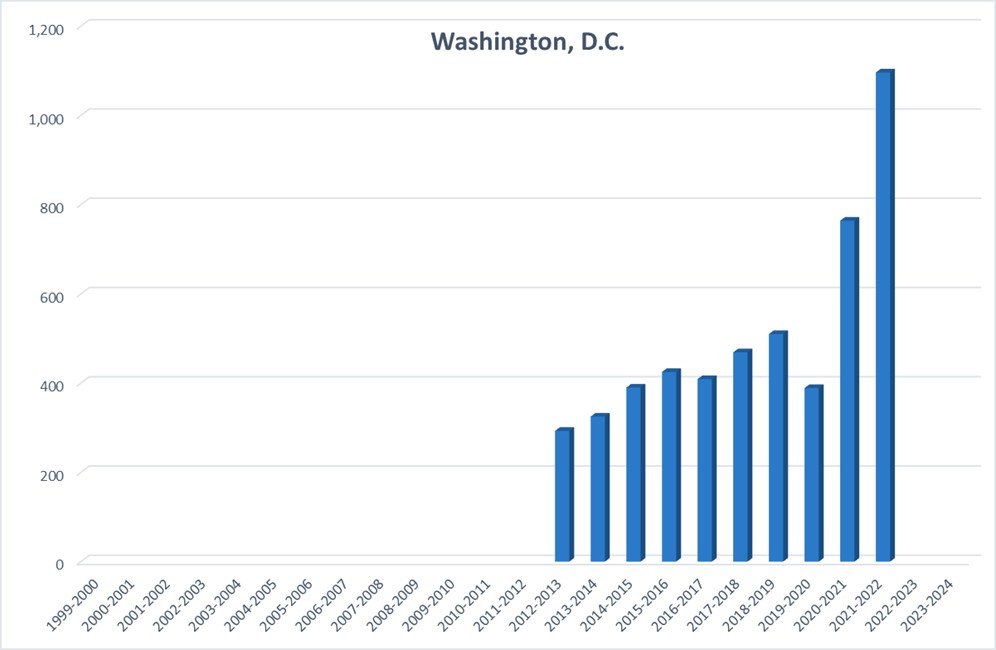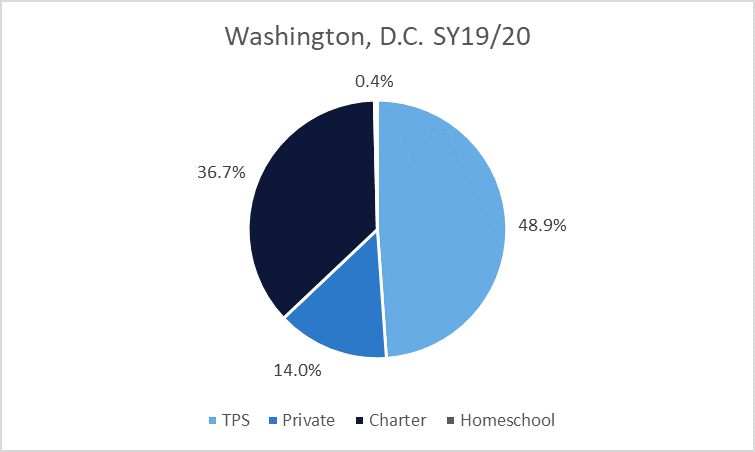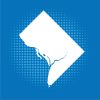Washington, D.C., is one of few locales requiring students to attend school for 13 years, ages 5-18. Most states require between 10 and 11 years of compulsory education.
History
The District of Columbia, in the southern United States and the seat of our nation’s capital, legalized homeschooling in 2008. It was one of the last areas to formally legalize homeschooling.
Regulation
The District of Columbia requires parents who elect to homeschool their children, ages 5 to 18, to notify the Office of the State Superintendent (OSSE) at least 15 days prior to the first day of home instruction. They must complete the Notification of Homeschool Continuation by August 15th annually. Also, parents who remove a child from a public school must notify the school of their intention to homeschool. There is only one homeschool option. Parents must keep accurate daily records of attendance, and instruction in the core subjects is required. There is also a portfolio requirement, and the portfolio must be available for review upon request. After a review, the OSSE can recommend a “corrective action” plan. There is no requirement for minimum instruction time.
Parents who direct their children’s education at home must have at least a high school diploma or GED, or they may petition the OSSE for a waiver. Although testing is not required, homeschooled students may participate in statewide assessments free of charge, and results are provided to families for information on student progress.
Homeschooled students may ask for permission to participate in sporting activities. However, no other official policies outline access for nonpublic students to public school offerings like courses and extracurriculars. According to the District of Columbia policy, homeschooled students are not eligible for special education services since they are no longer enrolled in public schools.
State Data
The District of Columbia requires all parents to file annual information on their homeschool participation, and they report that data upon request. This data is available starting in 2012. For example, around 400 students reported homeschooling in 2015 which increased to almost 1,100 at the height of the pandemic.

Similarly, U.S. Census estimates indicate that around 7.0% of D.C. families homeschooled in the spring of 2020 and increased to 10.3% by the fall of 2020. This compares to 5.4% and 11.1% at the national level. Based on U.S. Census data, our calculations indicate that about 8.54% of K-12 students in D.C. were homeschooled during the 2022-23 school year, and 3.04% during the 2023-24 school year. Due to survey changes, the data from 2020 reflects the percentage of households, while the data from following years reflects the percentage of students.
Cross-Sector Comparison
During the 2019-20 academic year, 0.4% of D.C.’s K-12 students were homeschooled. The percentage of homeschooled students was much lower than the 14.0% of students attending private schools. An even larger portion (36.7%) of D.C. students attended a charter school. In 2021-22, 1.0% of D.C.’s K-12 students were homeschooled. The percentage of homeschooled students was much lower than the 17.5% of students attending private schools. An even larger portion (36.2%) of D.C. students attended a charter school.


School Choice Context
In addition to homeschooling, parents in D.C. have various educational choices available. These options include enrollment in traditional public schools with limited inter- and intra-district choice, charter schools, magnet schools, and the D.C. Opportunity Scholarship program voucher for private schools. Currently, there is no public funding available for homeschool students. Over one third of D.C.’s students attend a charter school.
Commentary
D.C. could increase access to all nonpublic students for offerings at public schools, including extracurriculars and courses. They could also report more data that they collect, such as student age, grade, and locale. These efforts would remove barriers and improve transparency.

-
10.3% Families
Around 10.3% of families in D.C. homeschooled during the height of the pandemic (Fall 2020).
-
2008 Legalized
Homeschooling was legalized in the District of Columbia in 2008.
-

-
More Information
10.3% Families
Around 10.3% of families in D.C. homeschooled during the height of the pandemic (Fall 2020).
2008 Legalized
Homeschooling was legalized in the District of Columbia in 2008.

More Information
Last updated March 2025.